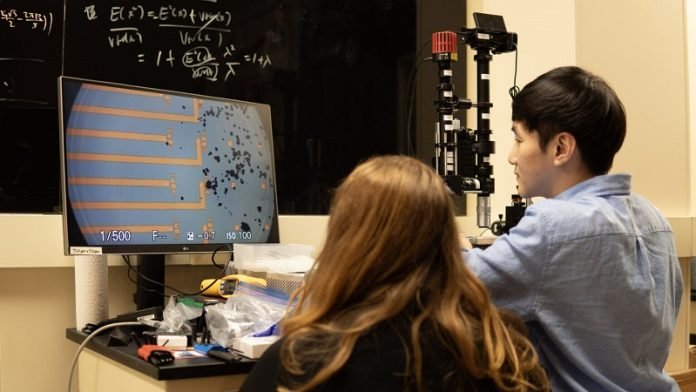
If you’ve ever dropped your phone and cracked the screen, you know that cracks usually mean bad news.
But what if cracks in certain things could be a good thing?
That’s what researchers at the University of Michigan have found when it comes to electric vehicle (EV) batteries.
Typically, cracks in batteries have been seen as problems because they can make the battery last a shorter time. But here’s the twist: these cracks might actually help the battery charge faster!
Electric vehicle makers have always tried to avoid these cracks because they want their batteries to last as long as possible.
Yiyang Li, a professor who led this study, mentioned that while many companies are focused on creating long-lasting, crack-free batteries, they might be missing out on the speed.
If you remove the cracks, the battery might take longer to charge. Imagine waiting for hours at a charging station during a road trip – not fun! We’d all prefer to charge our cars quickly, in maybe 15 to 30 minutes.
Most electric vehicles have batteries made up of trillions of tiny particles. How fast these particles can charge depends on their surface area compared to their volume.
Basically, if the particle has a large surface area for its size, it can charge faster.
But until now, scientists had a challenge: they couldn’t really measure the charging speed of these tiny particles individually. They could only guess based on the whole battery.
Using a special technique inspired by neuroscience (the study of the brain and nervous system), the research team took a closer look at individual battery particles.
They found out something surprising. The cracked particles had many more active surfaces, not just on the outside but also inside the cracks. This means they can take in more charging energy faster.
Here’s a cool part: the way they studied these battery particles was by borrowing a method used to study brain cells. Li, the study’s leader, got this idea from a friend who was studying neuroscience. Brain cells, it turns out, are similar in size to battery particles.
So, they used a special chip with microelectrodes, tiny devices to measure electrical activity, and placed the battery particles on them.
Using a super-thin needle (thinner than a human hair!), they moved individual battery particles onto these chips and then measured how they charged.
What they found was unexpected. The size of these particles didn’t seem to matter for charging speed. They think that bigger particles with cracks might act like lots of smaller particles grouped together. This is because the cracks provide more pathways for energy to flow.
For the future, this discovery means we need to think carefully when designing batteries. If we want batteries that both last long and charge quickly, we might need to look at the materials we use and how they’re structured. It’s like baking a cake – the ingredients and how you mix them can change the final result.
In conclusion, while cracks in batteries might seem bad because they reduce how long the battery lasts, they might have a silver lining by speeding up charging time.
So, next time you think of a crack as something negative, remember it might just have a bright side in the world of electric vehicles!
Follow us on Twitter for more articles about this topic.
Source: University of Michigan.



